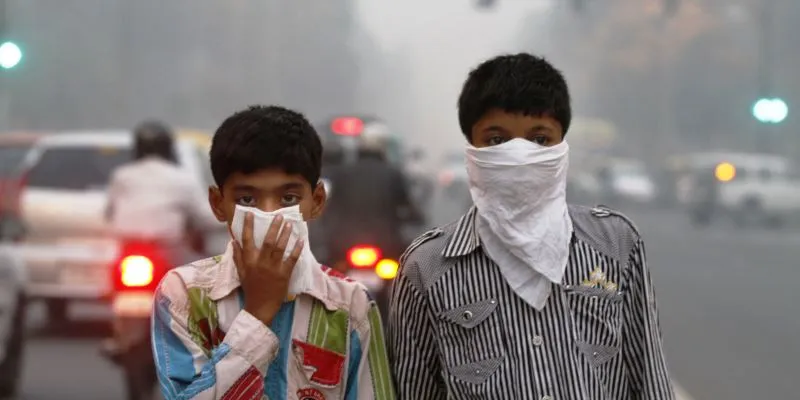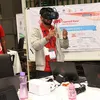Odisha students' IoT device enables you to detect and avoid polluted areas by measuring air quality
Six students from Odisha make daily commute easier with their pollution detecting and measuring device that was shown at the Smart India Hackathon.
Last year, a coughing teddy bear warned pedestrians of the most polluted streets in London. This year, a device by engineering students of Berhampur in Odisha is helping commuters avoid the most polluted streets.
Team Elite Air Cops developed a new-age device that shows the air quality at any place live on a smartphone. Their new design won Rs 1 lakh at the finale of the Smart India Hackathon 2019 - Hardware edition at IIT Delhi, one of the 19 nodal centres that hosted the grand finale.
With pollution levels in India cities beyond permissible levels, the students led by K Pavan Kumar (22) and his friends - K Ram Sai (21), Pallabi Mohapatra (21), Amisha Sahu (22), Sudhir Panda (22) and Bhabani Shankar Maharana (20) ideated on a product that can help Indians breathe cleaner air.

All the students are currently pursuing their Bachelor's at the National Institute of Science and Technology, Berhampur, though they specialise in different areas - computer science, electronics and communication. Putting their classroom learnings to practical use, they brainstormed on solutions to the worsening air quality in most Indian cities.
Working on the idea for seven months, they developed an Internet of Things (IoT)-enabled system that detects air pollutants in a particular area, computes the air quality index (AQI) and provides live data on a user’s phone and website as well.
Guiding people to better journeys
Live sensors are integrated into the system, which is made synchronous with a cloud server, making real-time average AQI values available.
This data is collected through a two-part system - static and mobility nodes. While static is stationed in an area ascertaining the quality in that place, mobility node must be installed on vehicles to check on places the person has travelled. This gives an in-depth gauge of the atmosphere a person travels through. Both the static and mobility node will be powered by vehicle battery and solar energy, respectively.
Team leader Pavan Kumar says there are many other purposes their system can serve.
“Apart from data storage, the cloud platform also applies machine learning algorithms to predict AQI values in the coming future, and helps users take precautions. We have used one of the most advanced technologies called soft sensors to detect sulphur dioxide (SO2) and nitrogen dioxide (NO2),” he says.
The mobile application is currently available for Android phones, and the web page is made keeping user convenience in mind. Apart from live AQI data, one can look up a less polluted path on the trip as well.
This might also reduce traffic to some extent. The logic behind this is that most polluted areas are generally the ones with most traffic. Once people start following routes suggested on the app, it will ultimately divert traffic and further improve air quality, and traffic snarls.
The device that helps you breathe
The system, when tested on vehicles and in the college campus, rendered an accuracy rate of 90 to 95 percent. The team is working on improving its accuracy, and sprucing up the rate. They also plan to make the ML models more efficient to predict future values of AQI.
The most challenging part of the project, according to the team, is making hardware like the mobility node, lighter and more compact.Currently, the prototype model uses a handmade Printed Circuit Board (PCB), and the wired connections make it bulky.
The members say that the strong backing from their mentors - Bhawani Shankar Pattnaik and Arunima Sambhuta Pattanayak who guided them through the technical processes, really helped them succeed. Their college, NIST, also funded the project’s expenses - around Rs 8,000.
The road to being ready for the market
While the product is yet to be named, the team’s plan to enter the market is clear and focussed.
In the near future, they hope to conduct a market study with the Transportation and Network Company (TNC), and modify the system further based on customer feedback. They will then contact stakeholders including Original Equipment Manufacturers (OEMs).
Based on the number of clients, service units will be opened.
“We are in discussions with Maruti Udyog for technology transfer to implement the same in their vehicles,” Pavan adds.
In addition to this, Team Elite Air Cops hopes to market their collected pollution data to the Central Pollution Control Board (CPCB), though discussions for this have not been initiated yet.
(Edited by Suruchi Kapur-Gomes)






1564138444749.png?fm=png&auto=format&h=100&w=100&crop=entropy&fit=crop)





